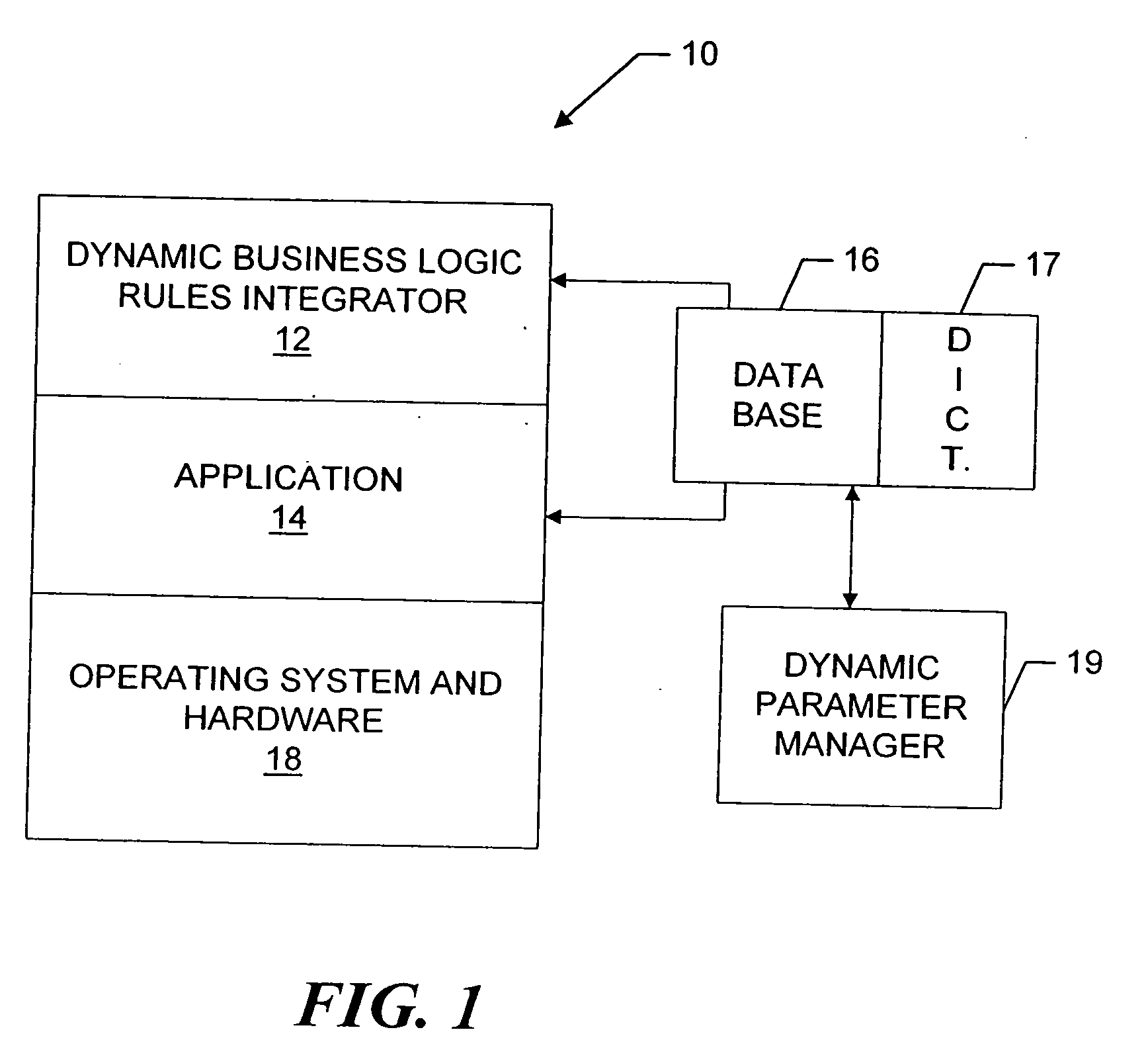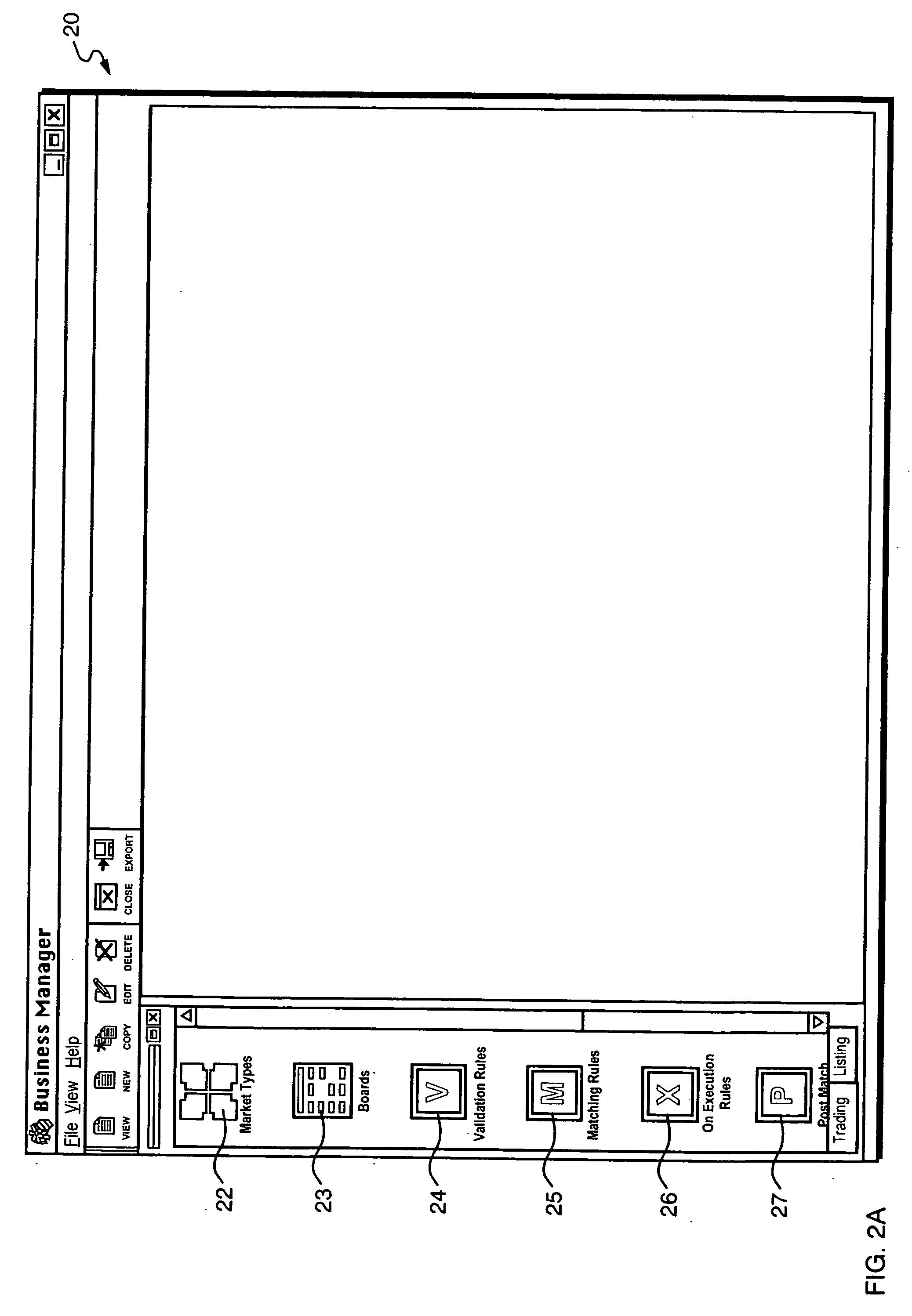System and method for configurable trading system
a trading system and configurable technology, applied in the field of data processing systems, can solve the problems of inability to accommodate new business plans, time-consuming and costly updating of customized application software, and prone to errors in re-writing the program
- Summary
- Abstract
- Description
- Claims
- Application Information
AI Technical Summary
Benefits of technology
Problems solved by technology
Method used
Image
Examples
Embodiment Construction
[0024] For completeness, the system is described first in general terms, and thereafter the dynamic business logic rule integrator (“DBLRI”) and the dynamic parameter manager are described in more detail.
[0025] A. The System
[0026] Referring now to FIG. 1, a system 10 that incorporates the invention includes a DBLRI 12, which provides to application software 14 various business logic rules in the form of executable routines. The DBLRI and the application software each communicate with a relational database 16, which contains data that are used by the application program. The database is organized into fields and sub-fields (not shown) that correspond to parameters that are included in the business logic rules. A dynamic parameter manager 19 manages the database in accordance with user-defined groupings of parameters to provide the user-defined parameters to the business logic rules through a set of linked database tables. The operations of the dynamic parameter manager are discusse...
PUM
 Login to View More
Login to View More Abstract
Description
Claims
Application Information
 Login to View More
Login to View More - R&D
- Intellectual Property
- Life Sciences
- Materials
- Tech Scout
- Unparalleled Data Quality
- Higher Quality Content
- 60% Fewer Hallucinations
Browse by: Latest US Patents, China's latest patents, Technical Efficacy Thesaurus, Application Domain, Technology Topic, Popular Technical Reports.
© 2025 PatSnap. All rights reserved.Legal|Privacy policy|Modern Slavery Act Transparency Statement|Sitemap|About US| Contact US: help@patsnap.com



